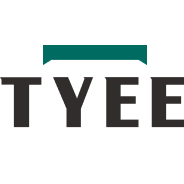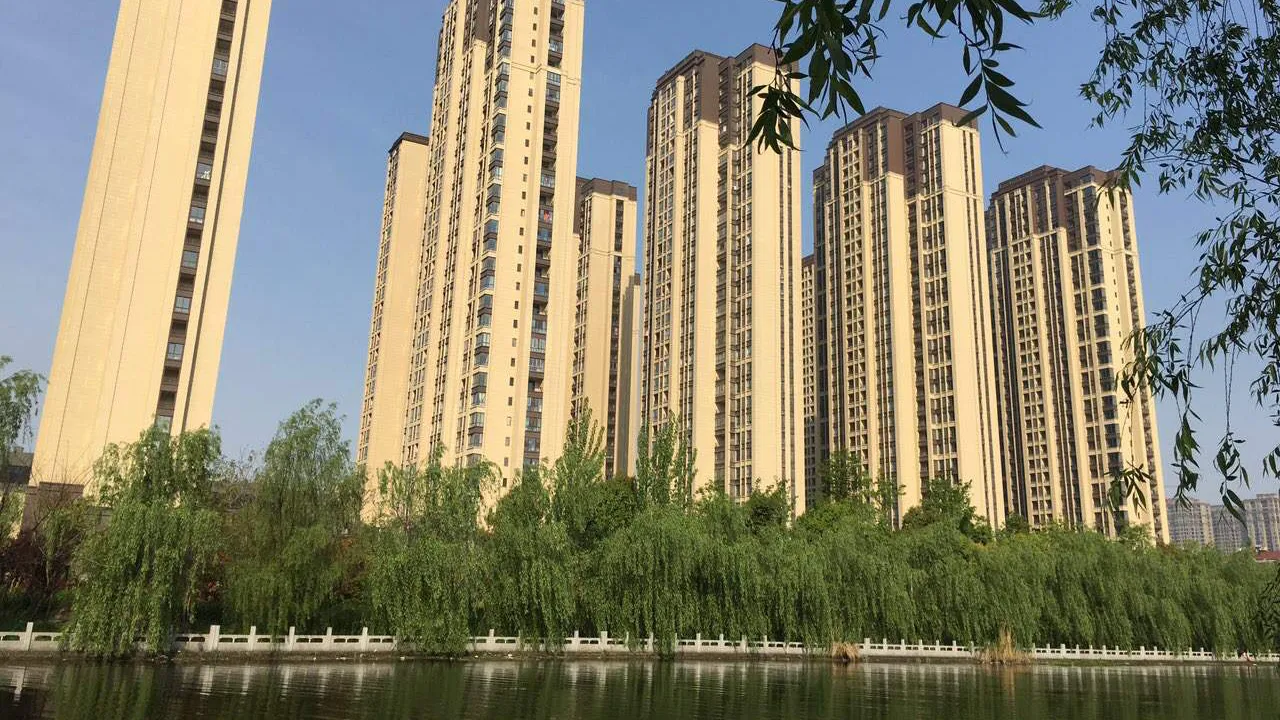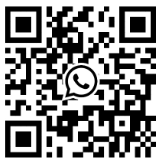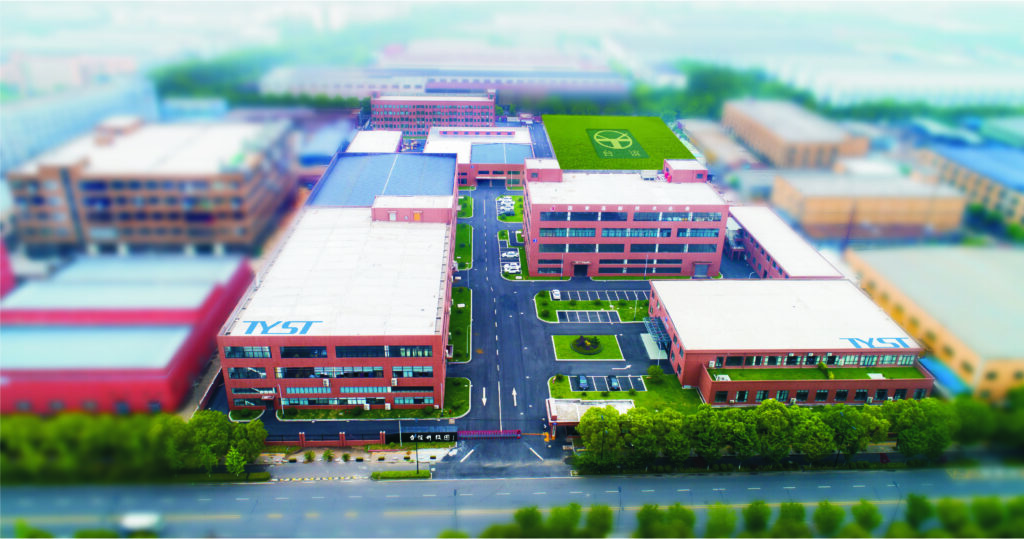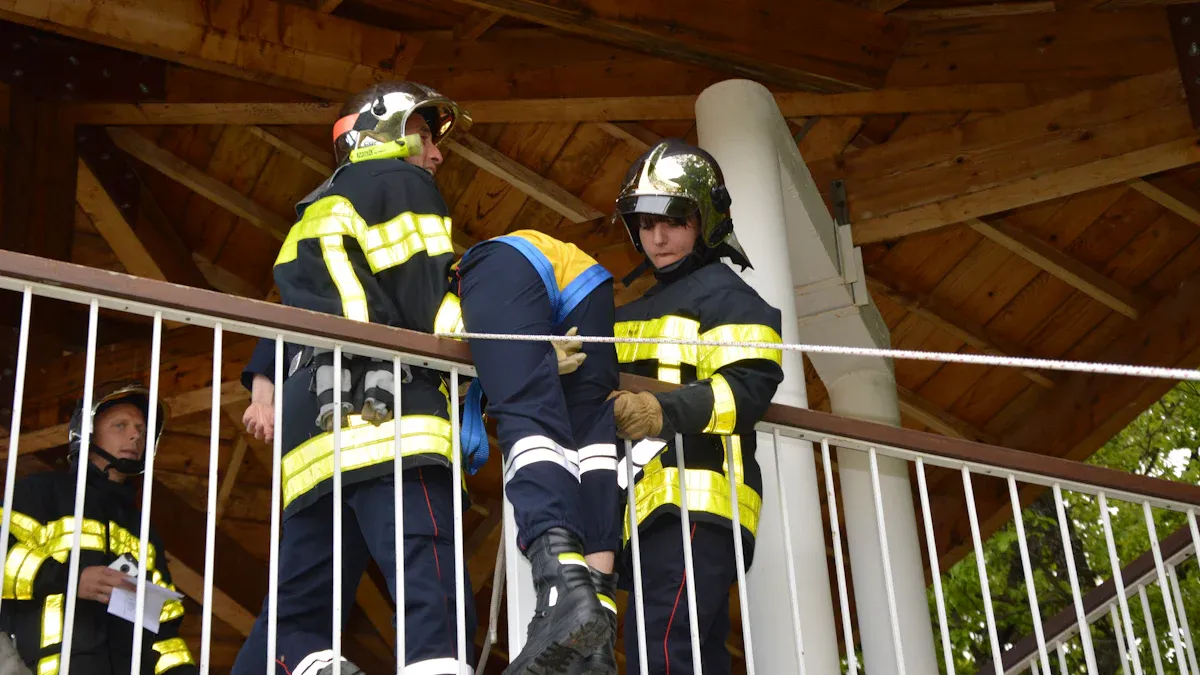
University campuses in developing regions have special fire safety problems. Dormitories are often full of students. Classrooms are crowded most of the day. Many students use electrical devices, which can cause fires. Singapore is a good example for Campus Fire Safety. They use strict building codes, smart technology, and clear emergency plans. Advanced alarm systems and IoT monitoring help campuses act fast during dangers.
Key Takeaways
Singapore has strict building codes and does regular checks. These rules help keep campuses safe. They use fire-resistant materials. They also make sure escape routes are easy to find.
Smart technology helps spot fires early. AI sensors, drones, and cloud monitoring are used. These tools help emergency teams respond faster.
Developing regions can make fire safety better. They should look at local risks. They can use cheap modular systems. Staff should practice with regular drills.
Community involvement is important for fire safety. Clear communication builds trust. It helps everyone follow fire safety rules.
Campuses need to keep checking their safety plans. They should set goals and change plans when needed. This helps them stay ready and safer over time.
Singapore’s Campus Fire Safety Principles (as reference)

Building Codes
Singapore has very strict building codes for schools. Every campus must use fire-resistant materials and have safe exits. They also need safe electrical systems. Inspectors check schools often for dangers. Escape routes must stay open. Fire doors are put in important places. The government changes the rules often to keep up with new safety ideas. This helps lower risks and keeps students safe.
Fire Safety Management
Good fire safety management is very important in Singapore. Campus leaders make emergency plans and teach staff and students what to do. They hold fire drills so everyone can practice leaving safely. Signs show where to go in an emergency. Safety officers check equipment and exits on a schedule. Schools use mobile apps to track checks and report problems fast. This way, everyone knows what to do if there is a fire.
Tip: Doing fire drills often and having clear signs help people act faster in real emergencies.
Technology Integration
Campuses in Singapore use new technology to make Campus Fire Safety better. They have smart fire alarms, wireless sensors, and cloud systems. These tools find smoke, heat, or gas leaks early. Drones with AI and mobile apps help staff spot problems before they get worse. The government gives money to help schools upgrade. This leads to over 60,000 checks each year and saves 32% on labor costs for big schools.
Aspect | Details |
|---|---|
AI-integrated inspection drones | 1,500 units globally in 2024 |
Mobile inspection apps | NFC tagging, offline sync |
Wireless waterflow sensors | Used in 35% of new sprinkler systems |
Inspection efficiency | 42% less manual testing time |
التصديق | EN54, ISO9001, ISO14001 |
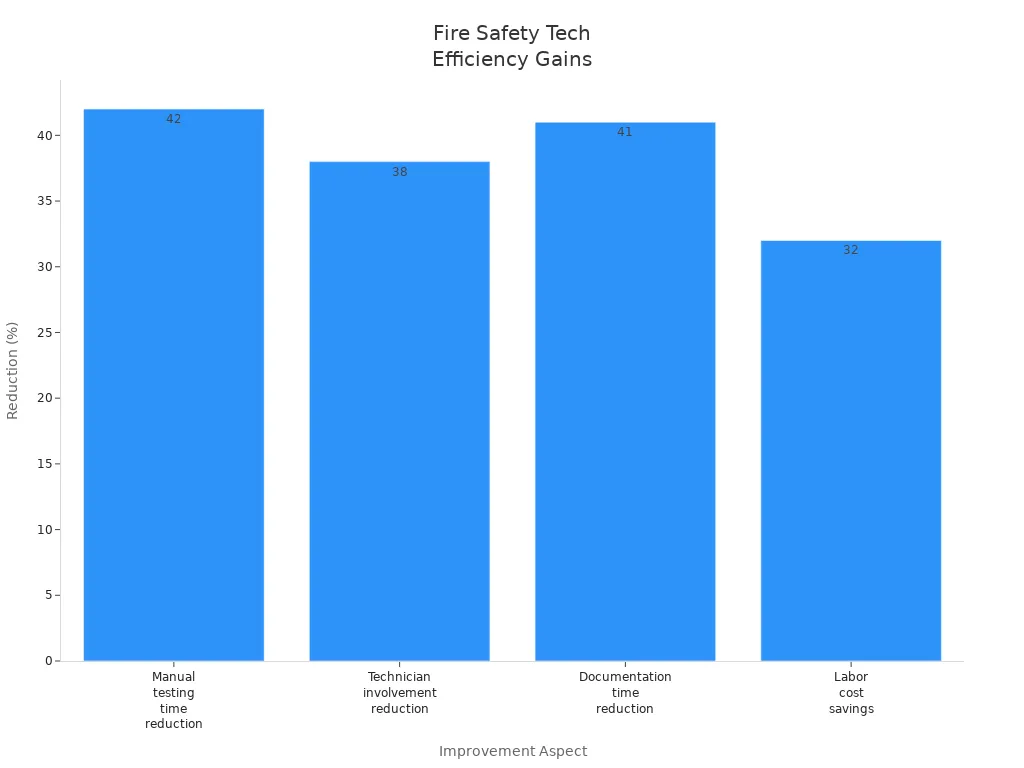
These smart systems help stop false alarms and make emergency response faster. They also help schools follow safety rules. By using technology, Singapore shows a good way for other regions to keep campuses safe from fires.
Adapting Best Practices for Developing Regions
Local Needs Assessment
Developing regions have special problems with Campus Fire Safety. Each campus needs to know its own risks. Leaders look at fire statistics and check local buildings. They also study how many people live in the area. They use fire risk assessment frameworks and machine learning models to find dangers.
Method/Aspect | Description |
|---|---|
Data Sources | Official fire statistics, socio-economic and governmental data |
Assessment Framework | Regional fire risk assessment using multivariate statistics and machine learning |
Machine Learning Models | K-Nearest Neighbors, Support Vector Machine, Random Forest |
Significant Indicators Identified | Population size, per capita GDP, income level, employment in state-owned agencies |
Model Performance | |
Effectiveness | Models explain regional fire risk patterns and identify key risk factors |
Transferability | Methods apply to developing regions beyond China |
الحرم الجامعي leaders follow simple steps. First, they find hazards like flammable items and bad wires. Next, they check what could start a fire. Then, they see who might get hurt and how. They write down what they find and make emergency plans. Staff get training. Leaders check and update these steps often.
This helps each campus make fire safety plans that fit their needs.
Cost-Effective Solutions
Many campuses do not have much money for fire safety. They need good and cheap ways to stay safe. Tyee’s smart fire safety systems can be used in many places. Their alarms use more than one sensor to stop false alarms from steam or dust. The system sends out alarms in three seconds. It can work with up to 64 controllers.
Tyee’s system connects smoke detectors, emergency lights, and EV charging station checks.
Real-time monitoring and AI video help spot blocked fire lanes and show safe exits.
Remote checks save money and stop false alarms.
The system has international certifications, so it meets world standards.
A university in Africa used Tyee’s system to keep students safe, showing that the system can perform reliably even in challenging conditions. Tyee’s products can be tailored for schools with limited budgets and are also suitable for larger campus projects, with specific implementations flexible to meet actual needs.
Tip: Picking modular fire safety systems lets schools upgrade slowly. This makes it easier and cheaper to improve safety.
Community Engagement
Getting the community involved is very important for Campus Fire Safety. Leaders talk to people face-to-face and listen to their ideas. This makes students and staff want to help. Brochures and social media help people learn, but do not always change what they do.
Action research and strong rules help people lead and join in.
Political help and social ties keep fire safety programs going.
Including everyone makes sure no group is left out.
Studies show youth programs like Fire Cadets give high value and good results.
Good leaders give clear goals and reasons. They focus on things that lower risks and use resources well. Trust and knowing what people care about help beat resistance. Clear talks and listening help everyone work together.
Note: Spending money on community fire safety programs helps people change for the better and keeps everyone safer.
Campus Fire Safety Technology Solutions
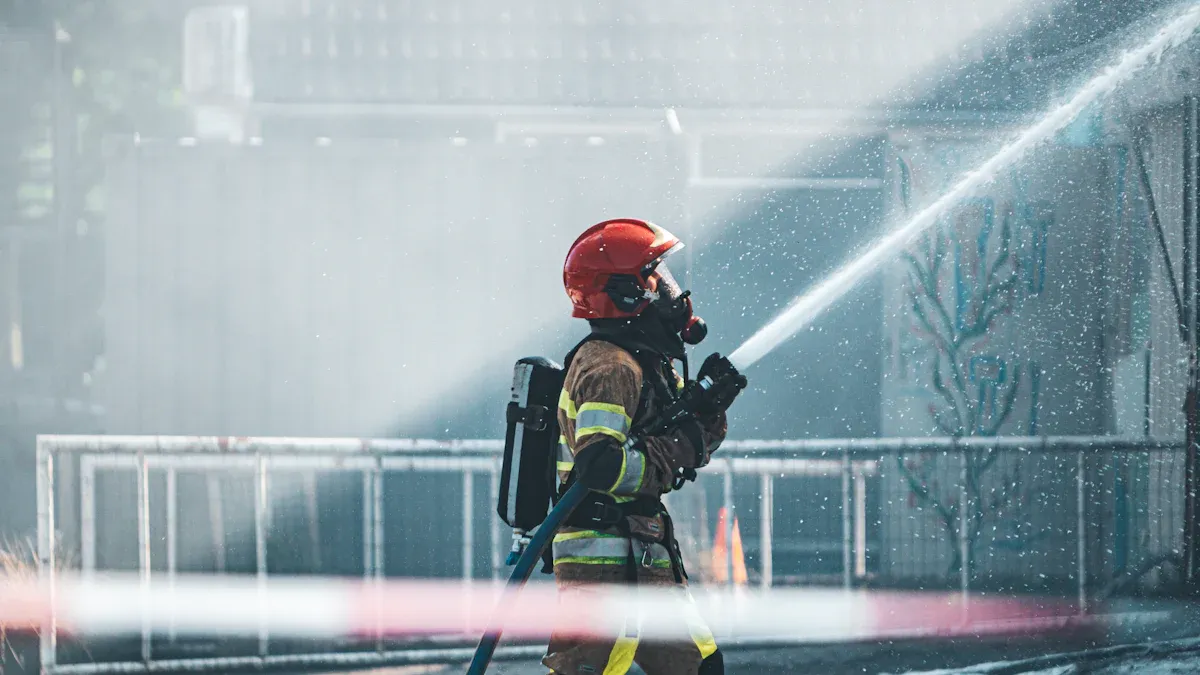
Modern campuses need good technology to keep people safe. Tyee has smart tools that help find fires early and warn everyone fast. These systems help schools in developing areas be safer and act quickly in emergencies.
Smart Fire Alarm Systems
Tyee’s Automatic Fire Alarm System uses smart sensors and cloud monitoring. The system checks for smoke, heat, and gas with real-time data. It picks the best way to spot fires in different places. Sensor data goes wirelessly to a main platform. Safety teams see alerts right away and can act fast.
Tests show this smart fire alarm system works well and is reliable. It cuts down on false alarms and helps people respond faster. The system links up to 64 controllers, so it fits big campuses. Schools can add more parts if they need to cover more areas. IoT alarms and cloud tools let staff check and fix things from far away, saving time and money.
Smart fire alarm systems help schools find fires early, send fast alerts, and help with emergency plans. This technology makes sure every warning is seen.
Emergency Lighting and Evacuation
Emergency lights and signs are important for safe evacuations. Tyee’s system uses LED lights and moving signs to show exits during fires or blackouts. The system checks equipment all the time and switches to emergency mode when needed.
Evidence Aspect | Description |
|---|---|
Schools in Abu Dhabi had faster and safer evacuations after adding emergency lights. Students left buildings quickly and calmly. | |
Installation & Maintenance | Putting lights near exits and checking them often keeps them working in emergencies. |
Technological Features | LED and glowing signs can be seen in smoke or darkness. |
Benefits | Emergency lights lower panic, help people find exits, and build a safety culture. |
Regulatory Support | Local fire rules say schools must have emergency lights and check them often. |
Studies show moving emergency signs help people leave faster and with less confusion. Smart lights with remote control and steady power stop panic. Good lights in stairs, halls, and classrooms help people find their way. These systems also help schools follow safety rules and raise property value.
Emergency lights help people leave safely.
Good lights can be seen in smoke or blackouts.
Checking lights often keeps them working.
Combustible Gas Detection
Combustible gas detection is important to stop fires from gas leaks in dorms, kitchens, and labs. Tyee’s Combustible Gas Alarm System uses strong sensors to find leaks fast. The system covers all areas and gives loud warnings to alert everyone.
Gas detectors warn early, so staff can fix leaks before they get bad.
Schools in Boston and Toronto used gas detectors to find leaks during checks and stopped accidents.
The detectors meet tough safety rules and fit with other safety codes.
Many schools have money problems when adding gas detection. Tyee’s easy-to-use design lets staff install it themselves. Sensors come ready to use and simple wires make setup quick and cheap. Backup support helps schools put detectors in the right spots and test them often.
Combustible gas detection systems help schools stop fires, protect buildings, and keep students safe. Finding leaks early and sending fast alerts are key for Campus Fire Safety.
Implementation Steps
Safety Assessment
A good fire safety plan starts with a careful check. Campus leaders collect information from many places. They talk with fire department staff, building managers, and students. They use surveys and interviews to find out about dangers. Experts walk through buildings to look for problems. Leaders also read old reports and documents about past fires.
Many campuses use numbers and expert opinions to check safety. They use methods like the Analytical Hierarchy Process (AHP) and Fuzzy AHP. These tools help turn expert advice into simple scores. For example, a team might use surveys and software to rate fire alarms or exits. This helps leaders know which places need the most help.
Tip: Using expert advice and data together gives a better view of campus fire risks.
Goal Setting
Clear goals help everyone know what to do in a fire. Leaders make step-by-step plans for leaving safely. They put up maps and signs to show the nearest exits. Staff teach students how to leave, like staying low in smoke and not using elevators.
Campuses have fire drills often. Resident Assistants lead training and answer questions. Schools celebrate Fire Prevention Week and let students practice with fire extinguishers. Leaders also check and improve fire alarms, sprinklers, and emergency lights. They make sure all plans follow local laws and rules.
Fire Safety Goal | Example Action |
|---|---|
Safe Evacuation | Post exit maps, run fire drills |
Education | Hold training, share safety tips |
Equipment Maintenance | Inspect alarms, upgrade systems |
Compliance | Meet local codes and standards |
Monitoring and Improvement
Fire safety keeps going after goals are set. Leaders watch how well the plan works. They get feedback from drills and real emergencies. Staff use checklists and digital tools to track checks. Leaders meet often to talk about what went well and what needs fixing.
Good programs include everyone. Skilled helpers guide changes. Leaders start with small steps and add more as things get better. They learn from each event and update the plan when needed. This helps keep the campus safer every day.
Note: Checking plans often and working together keeps fire safety strong and helpful.
Overcoming Challenges
Budget Limits
Many campuses do not have much money. Leaders find it hard to pay for fire safety. They look for ways to get the best safety for less money. Modular fire safety systems, like Tyee’s, let schools start small. Schools can add more parts later when they have more money. Leaders buy important things first, like smoke detectors and emergency lights. They also get gas alarms. They pick products with international certifications to make sure they work well. Grants and help from local groups or companies can pay for some costs. Remote monitoring and cloud management save money. These tools mean schools need fewer workers and spend less on repairs.
Tip: Schools can save money by fixing high-risk areas first and using fire safety systems that can grow.
Technical Skills
Many staff do not know much about fire safety. They do not know what to do in an emergency. Most healthcare workers have never had fire safety training. Over 80% have not learned how to use firefighting tools. Age, gender, and where people work can change these skill gaps.
Many staff do not know emergency phone numbers.
Few know how to use fire extinguishers.
Not many join training.
Younger men usually know more.
Good training uses special plans for each job. Leaders make lessons after checking what staff need. They use practice drills and give feedback. Doing drills often helps staff remember what to do. Training that thinks about gender and behavior helps people get ready and feel safer.
Cultural and Behavioral Barriers
Some people do not think fire risks are serious. Others do not want new safety rules or do not follow plans. Leaders must build trust and get everyone to join in. They talk clearly and listen to worries. Programs like Fire Cadets help change minds and build teams. Political help and strong friendships keep safety programs going. Leaders set clear goals and reward good actions. They focus on steps that lower risks and use resources well.
Barrier Type | Example Challenge | Solution Approach |
|---|---|---|
Cultural Attitudes | Not caring about fire risks | Teach, use youth programs |
Behavioral Habits | Not following safety rules | More drills, give rewards |
Resistance to Change | Not wanting new systems | Talk clearly, build trust |
Note: Keeping people involved and teaching them often helps beat cultural and behavior problems. This makes campuses safer for all.
Campus Fire Safety gets better when schools check for risks. They use good ideas that have worked before. Smart technology also helps keep everyone safe. Working with companies like TYEE brings better fire alarms and emergency lights to schools. In Shanghai, a public middle school used TYEE’s systems. Students left the building faster and were less confused. Training and working together help schools stay safe for students and staff.
FAQ
What makes TYEE’s fire alarm systems suitable for developing regions?
TYEE’s fire alarm systems use more than one sensor. They also use cloud monitoring to help find fires early. These features help schools stop false alarms. The system can be upgraded easily. It works for different budgets and needs.
How often should campuses test emergency lighting and evacuation systems?
Safety officers need to check emergency lights and signs every month. Regular checks make sure everything works in an emergency. Schools can use digital logs to keep track of checks and repairs.
Can TYEE’s gas detectors be installed by school staff?
School staff can put in TYEE’s gas detectors without trouble. The detectors go on the wall and have easy instructions. TYEE helps with where to put them and how to test them.
What training helps staff respond to fire emergencies?
Staff learn best with hands-on fire drills and equipment practice. Leaders set up training and give advice. Practicing often helps staff remember what to do and use safety tools right.
How do smart fire safety systems improve campus evacuation?
Smart systems send alerts right away and show exits. Emergency lights and signs help people find safe paths. Real-time checks help safety teams guide everyone out fast and calmly.

